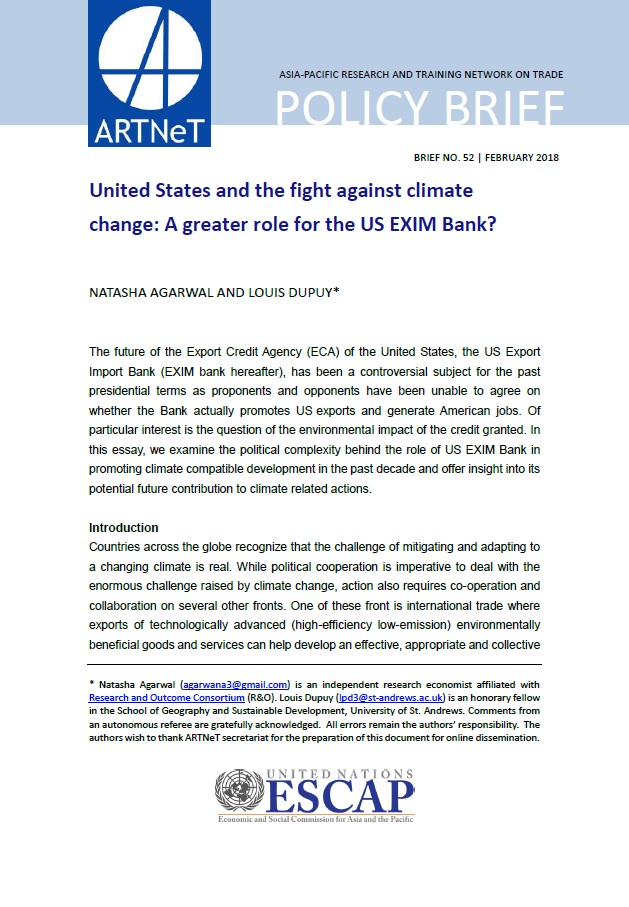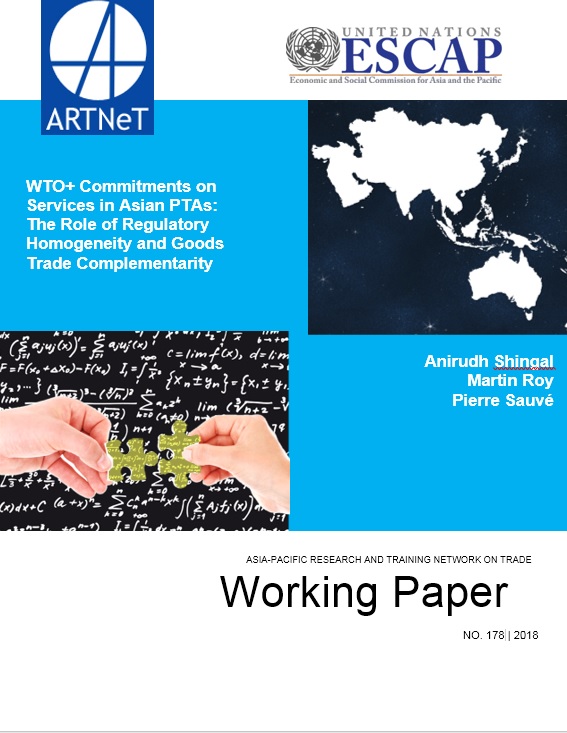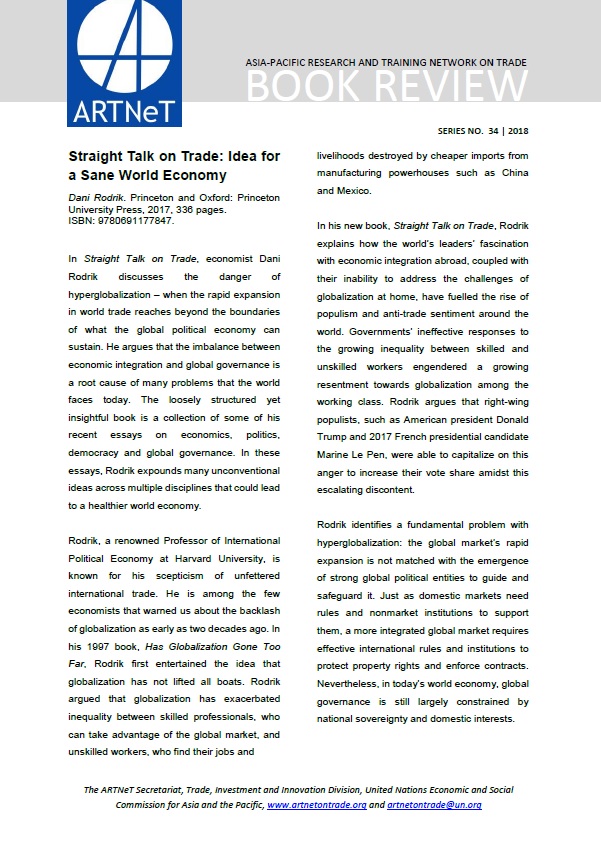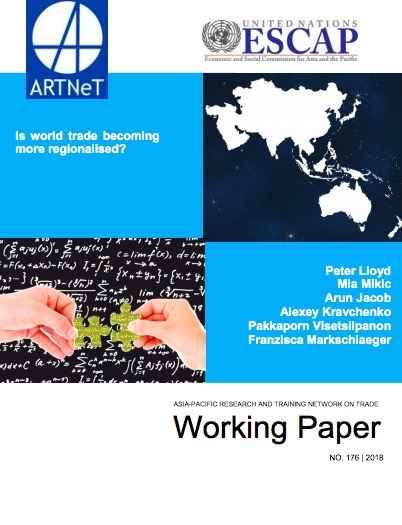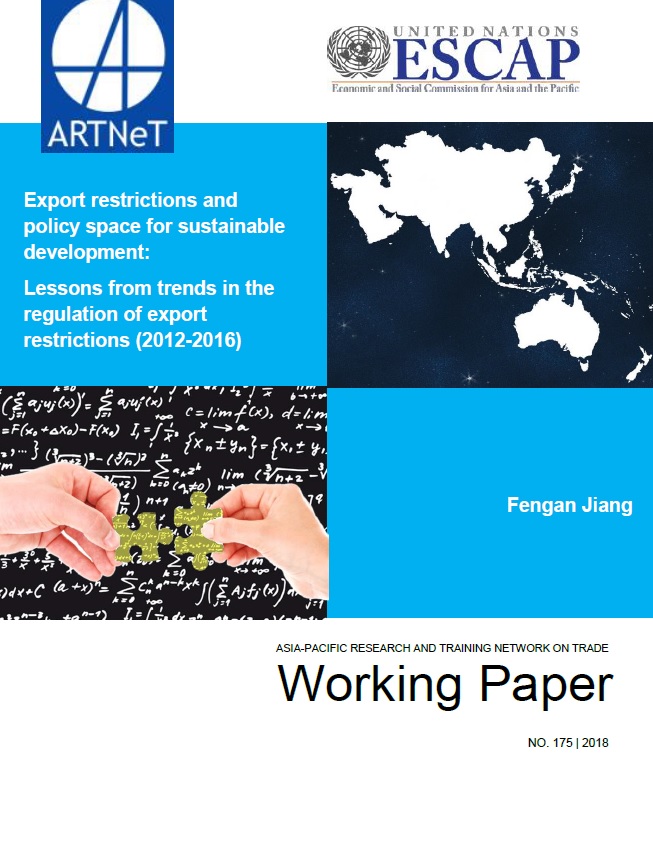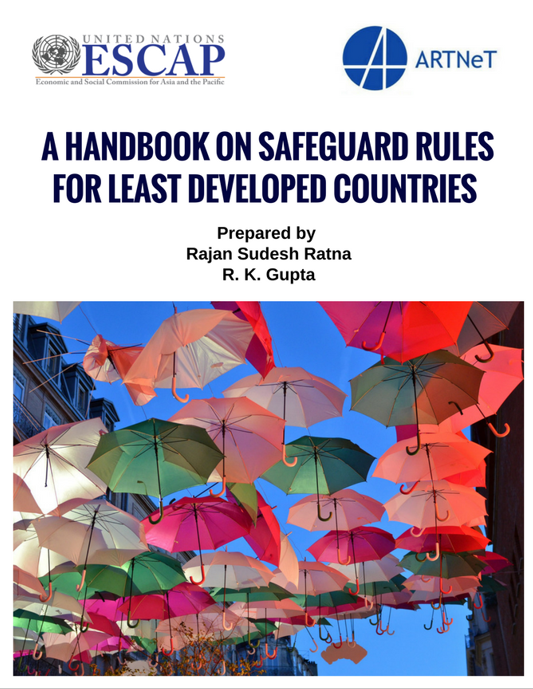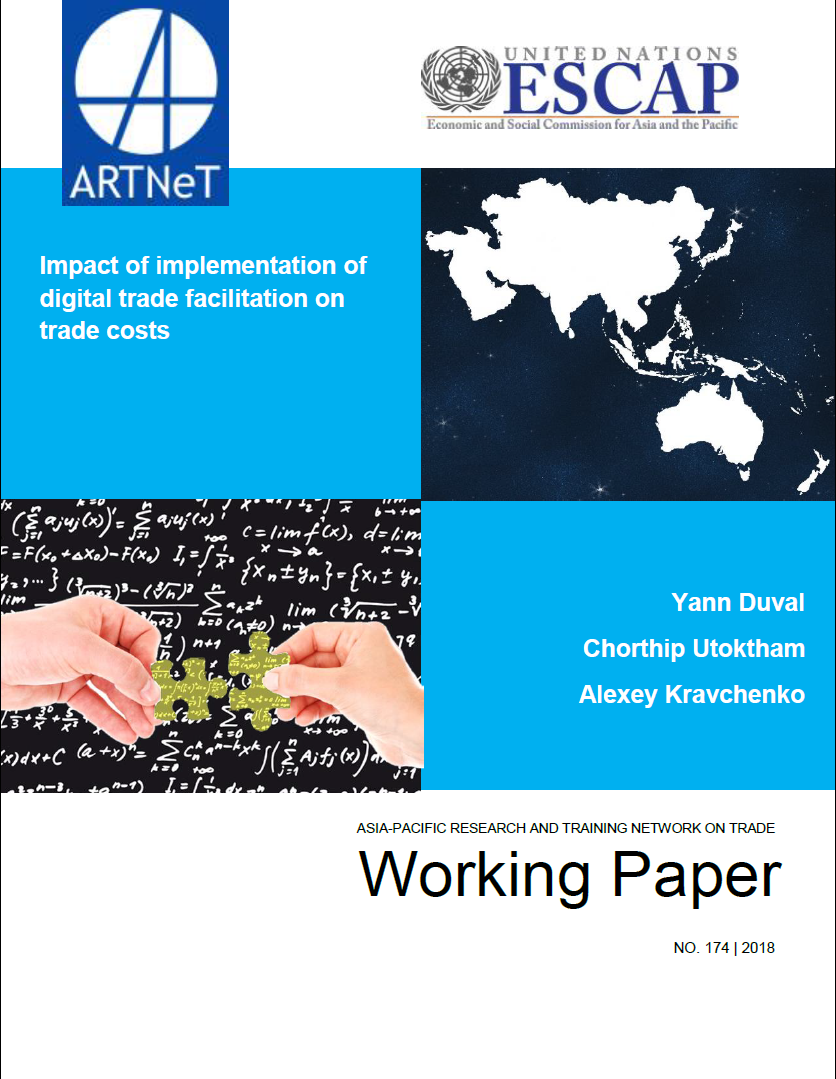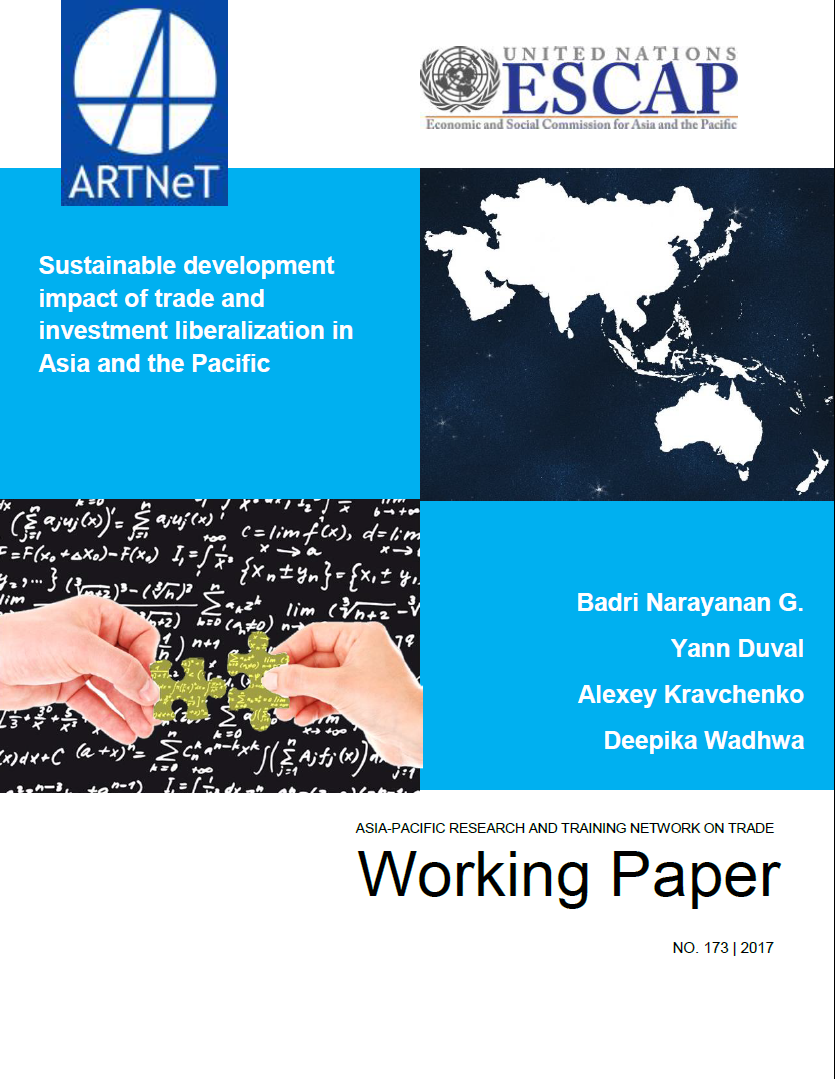United States and the fight against climate change: A greater role for the US EXIM Bank?
The future of the Export Credit Agency (ECA) of the United States, the US Export Import Bank (EXIM bank hereafter), has been a controversial subject for the past presidential terms as proponents and opponents have been unable to agree on whether the Bank actually promotes US exports and generate American jobs. Of particular interest is the question of the environmental impact of the credit granted. In this essay, we examine the political complexity behind the role of US EXIM Bank in promoting climate compatible development in the past decade and offer insight into its potential future contribution to climate related actions.

